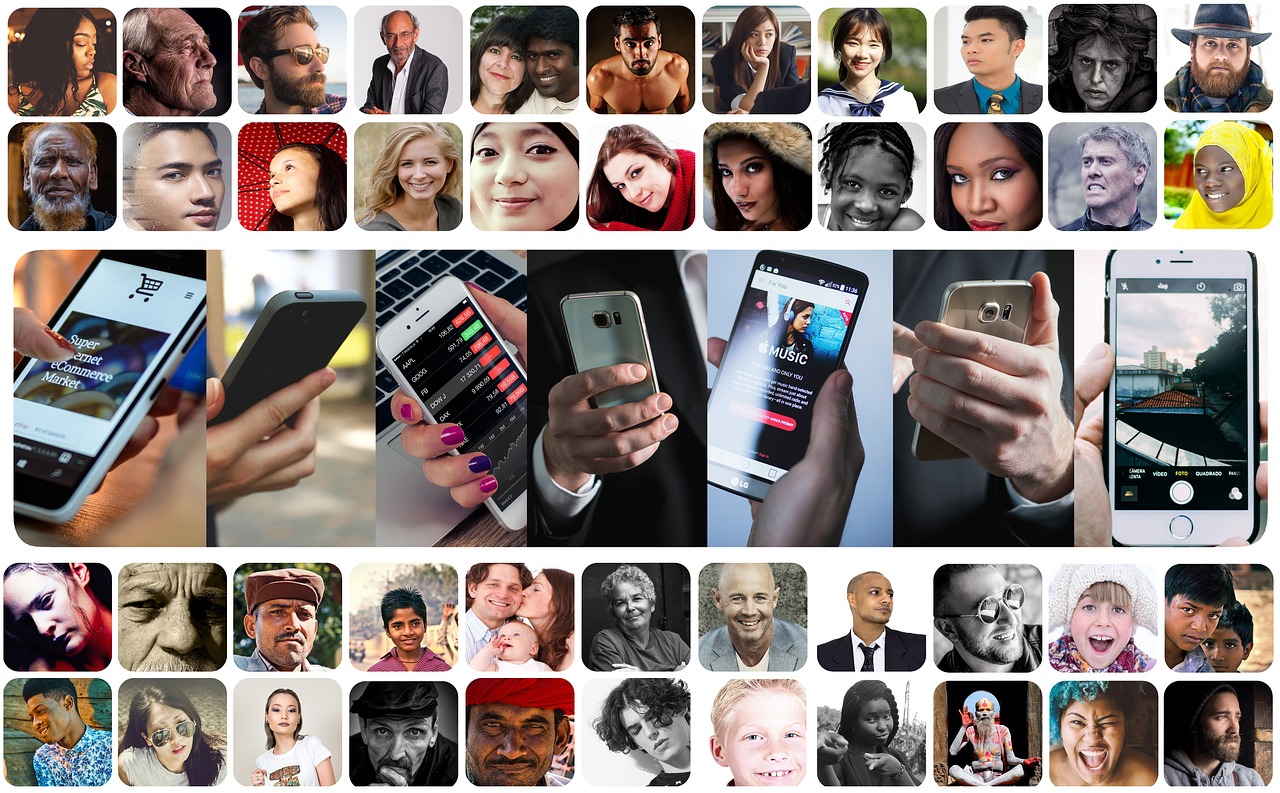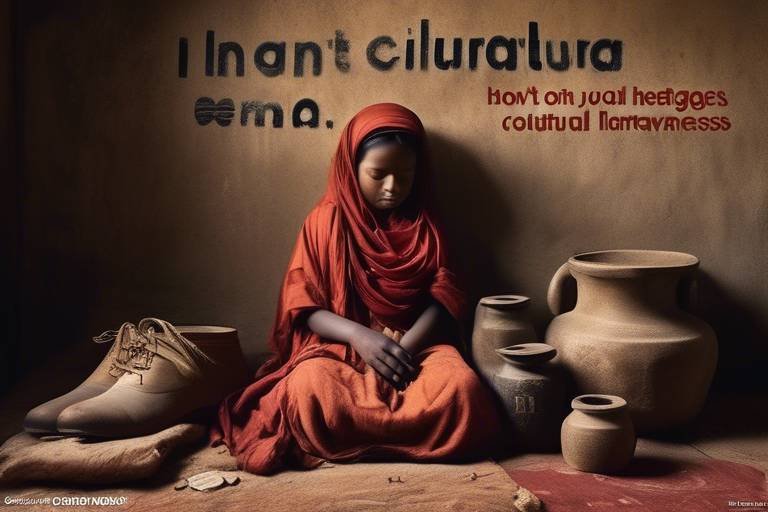Exploring the Role of Technology in Cultural Heritage Education
Technology plays a pivotal role in transforming the landscape of cultural heritage education, offering innovative tools and platforms to engage learners in immersive and interactive experiences. By harnessing the power of virtual reality (VR) and augmented reality (AR), educators can bring historical sites and artifacts to life, providing a deeper understanding of our rich cultural heritage.
Virtual reality enables users to step back in time and explore ancient civilizations, monuments, and artworks in a way that traditional textbooks cannot replicate. Through VR simulations, learners can walk through historical settings, interact with digital reconstructions, and gain a firsthand perspective of the past. This experiential learning approach fosters a sense of connection and appreciation for cultural heritage like never before.
Augmented reality applications further enhance the educational experience by overlaying digital information onto real-world environments. By pointing a mobile device at a cultural site, visitors can access contextual details, historical facts, and multimedia content that enrich their understanding of the significance behind each artifact or location. AR bridges the gap between the physical and digital worlds, offering a dynamic and interactive learning experience.
Online learning platforms have revolutionized the accessibility of cultural heritage education, breaking down geographical barriers and reaching a global audience. Through digital resources, virtual tours, and interactive modules, individuals from diverse backgrounds can engage with cultural content in a personalized and inclusive manner. These platforms not only educate but also inspire curiosity and a passion for preserving our shared heritage.
Interactive mobile apps have become valuable tools for cultural heritage education, offering users engaging features such as guided tours, scavenger hunts, and storytelling elements. By gamifying the learning experience, these apps make history come alive and encourage active participation from learners of all ages. The convenience of accessing cultural information on-the-go through mobile devices enhances the overall educational journey.
Digital storytelling techniques leverage multimedia elements and interactive narratives to convey historical and cultural information in a compelling manner. By combining visuals, audio, and interactive elements, educators can create engaging content that resonates with learners on a deeper level. Storytelling has the power to evoke emotions, spark curiosity, and make complex historical concepts more relatable and memorable.
The use of 3D scanning and printing technology allows for the preservation and exploration of cultural artifacts and heritage sites in a digital format. By creating accurate replicas of historical objects, museums and educational institutions can offer hands-on experiences to visitors, enabling them to interact with rare artifacts that may otherwise be inaccessible. 3D technology bridges the gap between the past and present, ensuring that cultural heritage remains alive and accessible for future generations.
Gamification in education introduces game elements and mechanics into cultural heritage learning experiences to enhance engagement and retention. By incorporating challenges, rewards, and interactive activities, educators can motivate students to explore and learn about cultural heritage in a fun and interactive way. Gamified experiences create a sense of achievement and progression, making the learning process more enjoyable and effective.
Social media platforms and online communities serve as powerful tools for sharing and promoting cultural heritage content, fostering a sense of community and collaboration among enthusiasts. By leveraging social networks, cultural institutions can reach a wider audience, spark meaningful discussions, and cultivate a sense of belonging and cultural appreciation. Social media engagement enhances the visibility and relevance of cultural heritage in the digital age.
When integrating technology into cultural heritage education, it is crucial to uphold ethical practices and cultural sensitivity. Educators must ensure that digital representations and interpretations of cultural artifacts are respectful, accurate, and inclusive of diverse perspectives. By prioritizing authenticity and historical integrity, technology can be a powerful ally in preserving and promoting cultural heritage for future generations.

Integration of Virtual Reality
Virtual Reality (VR) has revolutionized the way we experience and learn about cultural heritage. By immersing users in realistic and interactive virtual environments, VR technology offers a unique opportunity to explore historical settings and artifacts like never before. Imagine walking through the ancient ruins of Machu Picchu or stepping into the majestic halls of the Louvre Museum, all from the comfort of your own home. With VR, learners can engage with cultural heritage in a way that is both educational and captivating.
Through the integration of VR, educators can create immersive experiences that transport students back in time, allowing them to witness historical events firsthand. By interacting with virtual reconstructions of ancient civilizations or exploring digital replicas of archaeological sites, learners can gain a deeper understanding of the past and develop a greater appreciation for cultural heritage. VR technology not only enhances the educational experience but also sparks curiosity and fosters a sense of wonder and discovery.
Moreover, VR simulations can offer a safe space for experimentation and exploration, enabling users to interact with delicate artifacts and heritage sites without the risk of damage. By providing a hands-on learning experience, VR encourages active participation and critical thinking, making cultural heritage education more engaging and effective. The integration of Virtual Reality is truly transforming the way we connect with our shared history and heritage.

Augmented Reality Applications
The integration of technology in cultural heritage education has revolutionized the way we learn about and experience history. From virtual reality to augmented reality applications, online learning platforms to interactive mobile apps, technology has opened up new possibilities for engaging with our cultural heritage in immersive and interactive ways.
Augmented Reality (AR) applications have transformed the way we interact with cultural sites and artifacts. By overlaying digital information onto real-world environments, AR technology provides visitors with contextual information and a deeper understanding of the historical significance of the places they are exploring. Imagine walking through the ruins of an ancient city and seeing virtual reconstructions of what it looked like in its heyday, or pointing your smartphone at a museum exhibit and instantly accessing detailed information about its origins and cultural importance.
AR applications not only enhance visitor experiences by providing interactive and educational content but also make cultural heritage more accessible to a wider audience. Through the use of AR technology, historical sites and artifacts can be brought to life in a way that is both engaging and informative, fostering a deeper appreciation for our shared cultural heritage.
Furthermore, AR technology has the potential to bridge the gap between the past and the present, allowing us to experience history in a dynamic and interactive way. By blending the physical world with digital enhancements, AR applications create a unique learning environment that encourages exploration, discovery, and a deeper connection to our cultural heritage.
In conclusion, Augmented Reality applications are a powerful tool for enhancing cultural heritage education, providing visitors with immersive and interactive experiences that bring history to life in a way that is both educational and engaging.

Online Learning Platforms
Online learning platforms have revolutionized the way cultural heritage education is delivered to a global audience. These digital resources provide a gateway for learners to explore historical sites, artifacts, and traditions from anywhere in the world. Through interactive modules, virtual tours, and multimedia content, online platforms offer a dynamic learning experience that transcends geographical boundaries.

Interactive Mobile Apps
Interactive mobile apps have revolutionized the way we engage with cultural heritage content. These applications go beyond traditional methods of learning and offer users a dynamic and interactive experience that brings history to life in the palm of their hands. By incorporating features such as interactive tours, quizzes, and storytelling elements, these apps cater to a wide range of audiences, from casual learners to avid history enthusiasts.
Imagine strolling through the ruins of an ancient civilization, guided by a virtual tour that provides detailed information about each artifact you encounter. With just a tap on your screen, you can delve deeper into the history and significance of each object, gaining a richer understanding of the cultural heritage site you are exploring.
Moreover, interactive mobile apps often include gamified elements that make learning fun and engaging. By completing quizzes, challenges, and interactive activities, users can test their knowledge, earn rewards, and track their progress as they delve into the depths of historical narratives.
These apps also offer a storytelling feature that presents historical events in a captivating and immersive way. Through multimedia elements such as audio guides, videos, and interactive narratives, users can experience history as if they were part of the story, making the learning process both educational and entertaining.
Furthermore, interactive mobile apps foster a sense of connection and curiosity among users, encouraging them to explore cultural heritage sites and artifacts in a way that transcends traditional learning methods. By leveraging the power of technology, these apps bridge the gap between the past and the present, allowing users to interact with history in a unique and personalized manner.

Digital Storytelling Techniques
Digital storytelling techniques have revolutionized the way historical and cultural information is presented and consumed. By incorporating multimedia elements such as images, videos, audio, and interactive features, educators can create immersive and engaging narratives that resonate with learners on a deeper level. These techniques go beyond traditional text-based learning, allowing for a more dynamic and interactive exploration of cultural heritage.
One powerful aspect of digital storytelling is its ability to transport learners back in time, enabling them to experience historical events and cultural traditions firsthand. Through the use of virtual reconstructions, animations, and interactive timelines, users can engage with the past in a way that is both educational and emotionally impactful. This approach helps bridge the gap between the present and the past, making history come alive in a vivid and compelling manner.
Moreover, digital storytelling techniques allow for a personalized learning experience, catering to diverse learning styles and preferences. By offering interactive elements such as quizzes, decision-making scenarios, and branching narratives, educators can tailor the content to suit individual learners' needs and interests. This customization enhances engagement and retention, making the learning process more enjoyable and effective.
Furthermore, digital storytelling facilitates the preservation and dissemination of cultural heritage in a digital age. By digitizing artifacts, documents, and oral histories, educators can create rich multimedia resources that can be accessed and shared globally. This not only helps in the conservation of cultural treasures but also ensures that knowledge and traditions are passed down to future generations in a format that is accessible and engaging.
In conclusion, digital storytelling techniques offer a dynamic and immersive way to educate and inspire learners about cultural heritage. By leveraging multimedia elements, interactive features, and personalized experiences, educators can create compelling narratives that bring history and culture to life in a digital landscape. These techniques not only enhance learning outcomes but also contribute to the preservation and appreciation of our rich cultural heritage.

3D Scanning and Printing
The integration of 3D scanning and printing technology has revolutionized the field of cultural heritage education, offering innovative ways to explore and interact with historical artifacts and sites. By utilizing advanced scanning techniques, experts can create highly detailed digital replicas of objects that are otherwise fragile or inaccessible to the public. These digital models can then be used to produce physical replicas through 3D printing, allowing for hands-on exploration and study of cultural objects.
One of the key advantages of 3D scanning and printing in cultural heritage education is the ability to preserve and protect fragile artifacts. By creating digital backups of objects, researchers can study and analyze them without risking damage to the originals. This technology also enables museums and cultural institutions to share their collections with a global audience through online platforms, virtual exhibitions, and interactive experiences.
Moreover, 3D scanning and printing facilitate new forms of learning and engagement with cultural heritage. Students and visitors can interact with 3D models of artifacts in ways that are not possible with traditional displays. For example, they can zoom in on intricate details, rotate objects to view them from different angles, and even manipulate digital replicas to understand their construction and significance.
Furthermore, 3D scanning and printing technology opens up possibilities for immersive experiences and virtual reconstructions of historical sites. By combining scanned data with virtual reality environments, users can explore ancient ruins, architectural wonders, and lost civilizations in a way that brings history to life. This interactive approach to learning fosters curiosity, creativity, and a deeper appreciation for cultural heritage.

Gamification in Education
Gamification in education is a revolutionary approach that infuses elements of games into the learning process, making it more engaging and enjoyable for students. By incorporating game mechanics such as points, badges, leaderboards, and challenges, educators can transform traditional cultural heritage education into an interactive and immersive experience. Imagine exploring ancient ruins or historical sites through a gamified mobile app where you earn points for answering quiz questions correctly or unlocking virtual rewards by completing challenges. This gamified approach not only motivates learners but also enhances their retention of cultural knowledge by making the learning experience fun and memorable.

Social Media and Community Engagement
Social media has revolutionized the way we connect, share, and engage with content, including cultural heritage education. Platforms like Facebook, Instagram, and Twitter serve as powerful tools for spreading awareness and fostering community engagement around historical sites, artifacts, and traditions. By leveraging the reach and interactivity of social media, cultural institutions can amplify their educational efforts and reach a wider audience than ever before.
Through compelling visual content, engaging stories, and interactive features, social media platforms enable users to immerse themselves in cultural heritage experiences from the comfort of their own screens. Virtual tours, live streams, behind-the-scenes glimpses, and interactive challenges all contribute to creating a dynamic and participatory learning environment that transcends physical boundaries.
Moreover, online communities dedicated to cultural heritage provide a space for enthusiasts, scholars, and learners to exchange ideas, share insights, and collaborate on preservation efforts. By facilitating dialogue, networking, and knowledge-sharing, social media platforms nurture a sense of belonging and collective responsibility towards safeguarding and promoting our shared cultural legacy.
Furthermore, social media analytics offer valuable insights into audience preferences, engagement levels, and trending topics, allowing cultural heritage educators to tailor their content strategies effectively. By monitoring feedback, comments, and shares, institutions can gauge the impact of their educational initiatives and refine their approach to better resonate with their online community.
In conclusion, social media plays a vital role in promoting cultural heritage education by fostering community engagement, facilitating knowledge exchange, and amplifying the reach of educational initiatives. By harnessing the power of digital platforms, cultural institutions can create meaningful connections with audiences worldwide and inspire a new generation of heritage enthusiasts and advocates.

Ethical Considerations in Technological Integration
In the realm of cultural heritage education, the integration of technology brings forth a myriad of ethical considerations that must be carefully navigated. One crucial aspect is the need for cultural sensitivity when implementing digital tools to educate about heritage sites and artifacts. It is essential to respect the traditions, beliefs, and values associated with different cultures, ensuring that technology does not distort or misrepresent the significance of these cultural assets.
Moreover, maintaining authenticity is paramount in technological integration within cultural heritage education. While technology can enhance the learning experience, it is crucial to preserve the integrity and historical accuracy of the information presented. This requires thorough research and collaboration with experts to ensure that the digital representations of heritage sites and artifacts are faithful to their original form and context.
Another ethical consideration revolves around data privacy and security when utilizing online platforms and mobile applications for cultural education. Safeguarding personal information and ensuring secure access to digital resources are essential to protect the privacy of users engaging with cultural heritage content. Implementing robust security measures and adhering to data protection regulations are imperative to build trust and credibility among learners and visitors.
Furthermore, the inclusivity and diversity of cultural perspectives must be given careful attention in the integration of technology. It is vital to represent a wide range of cultural narratives and histories to promote understanding and appreciation of diverse heritage. By incorporating multiple viewpoints and voices, technology can foster a sense of cultural belonging and respect for different traditions, fostering a more inclusive educational experience.
Lastly, ethical practices in technological integration require a commitment to transparency and accountability in the use of digital tools for cultural heritage education. Educators, developers, and stakeholders must be transparent about the sources of information, the methodologies used in digital storytelling, and the potential biases that may influence the presentation of cultural content. By upholding ethical standards and promoting open dialogue, the integration of technology can contribute positively to preserving and promoting cultural heritage for future generations.
Frequently Asked Questions
- What is the significance of integrating virtual reality in cultural heritage education?
Virtual reality enhances the learning experience by immersing learners in historical settings and artifacts, making the educational process more engaging and interactive.
- How does augmented reality contribute to visitor experiences at cultural sites?
Augmented reality overlays digital information onto real-world sites, providing contextual details and enriching the visitor's understanding of the cultural significance of the location.
- What role do online learning platforms play in making cultural heritage education accessible?
Online platforms offer a global audience access to cultural heritage content, promoting inclusivity and enabling individuals from diverse backgrounds to engage with historical information.
- How do interactive mobile apps enhance cultural heritage education?
Mobile apps provide interactive tours, quizzes, and storytelling features that educate and engage users with cultural heritage content, making learning more interactive and enjoyable.
- Why is digital storytelling important in conveying historical and cultural information?
Digital storytelling uses multimedia elements and interactive narratives to make historical information engaging and memorable for learners, fostering a deeper understanding of cultural heritage.
- What is the benefit of using 3D scanning and printing in cultural heritage preservation?
3D scanning technology allows for the creation of digital replicas of artifacts and heritage sites, enabling hands-on exploration and the preservation of cultural objects for future generations.



















